Indiana’s Nickel Plate Trail
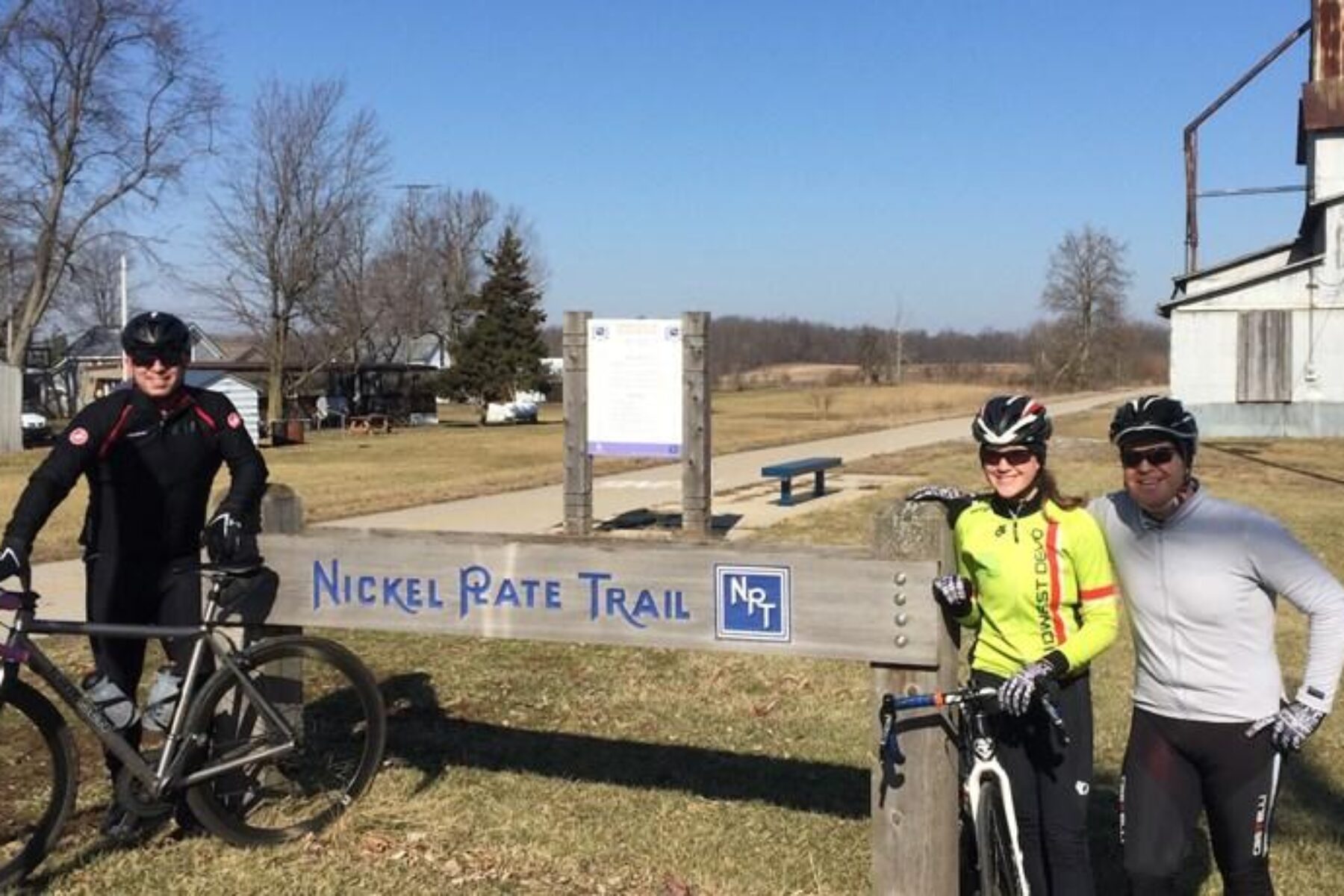
Trail of the Month: March 2017
“Nickel Plate allows you to detach from everyday life, to really escape from it all on a bicycle.”
Pedaling the Nickel Plate Trail on a chilly winter afternoon, riders might be taken aback by the barren landscape. With the crops long since collected, and the beech and walnut trees devoid of leaves, many riders only see gray skies and Indiana’s notorious flatlands for miles and miles. But in the spring, when the corn shoots up from the ground and the trees are full of life again, the trail really becomes a thing of beauty.
Full of Hoosier Character
Indianapolis resident Greg Dyas recently rode the Nickel Plate with a group of friends and his daughter Ellie, 14. The trail’s gentle grade, light traffic and perfect pavement made it ideal for Ellie’s longest ride ever, a 53-mile journey from Peru to Rochester and back.
“It was a wonderful ride; the (Nickel Plate) really shows off Indiana’s character,” Dyas said. “We can’t wait to go back and do the entire trail.”
Zac See, owner of Breakaway Bike and Fitness Shop in Peru, also loves the Nickel Plate, and not just because it’s brought thousands of new customers into his shop.
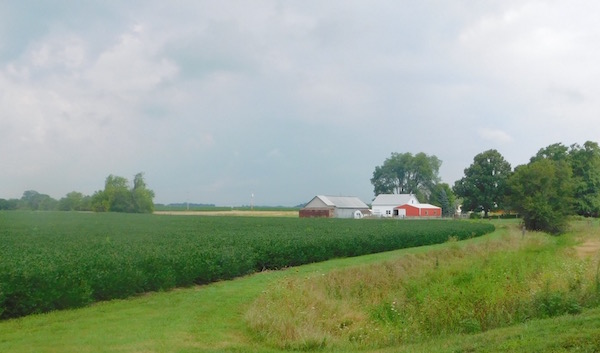
“It passes through so much beautiful rural scenery (that Indiana has to offer),” See said. “The Monon Trail in Indianapolis has a lot of cool action happening around it, great places to stop to grab a coffee or for social interaction, but the Nickel Plate allows you to detach from everyday life, to really escape from it all on a bicycle.”
The trail stretches 37 miles from Kokomo, about an hour north of Indianapolis, to Rochester, passing through farmlands and woods, crossing over the Wabash River and the remnants of an old canal, and even passing by dozens of decommissioned fighter jets and military planes at the Grissom Air Reserve Base just south of Peru.
Nickel Plate riders currently have to make a 3-mile detour on Peru city roads before reconnecting to the trail. Peru is well known in Indiana for its circus roots and even has a school to teach aspiring performers trapeze and other skills. Even so, passing a sign for Clown Alley makes many riders pedal that much faster. (All joking aside, Doc Hill’s Clown Alley is named after a beloved local physician who moonlighted as a clown in the local circus.) Luckily, that missing section of trail will be completed in the coming years, says Mike Kuepper, president of Nickel Plate Trail, Inc., the nonprofit that helps operate the trail.
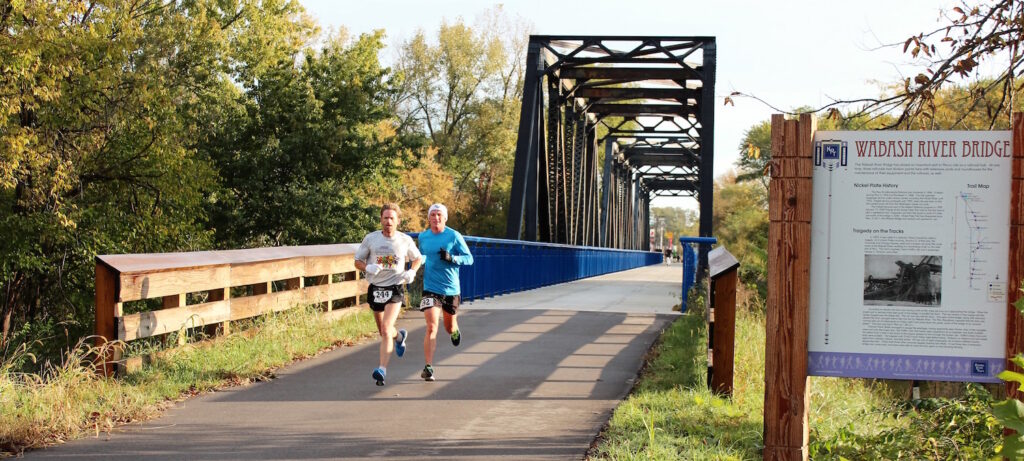
A Brief History of the Trail
Before the Nickel Plate was paved for two-wheeled (and -legged) locomotion, it went by a variety of different names, including the Indianapolis, Peru, and Chicago line. The rail line was originally built to work in conjunction with the Wabash and Erie Canal, but a depression from 1839 to 1843 forced a work stoppage on the waterways. By the time the economy recovered, the railroad had become the dominant mode of transportation, and the canals fell into disrepair. Eventually, railroads too would lose steam. The Nickel Plate line was sold numerous times over the years, finally to Norfolk and Western (N&W) in 1964. In the ensuing decades, the number of trains continued to dwindle until the line was completely disused by 1992.
In 2000, trail advocates broached the idea of transforming the Nickel Plate into a rail-trail. See bought his shop in Peru months before the first section of trail was completed.
“We opened in March of 2006; the Nickel Plate opened that fall,” See said. “The following spring, people were buying bikes because they wanted to ride the new trail.”
Kuepper and other trail founders parlayed an initial $150,000 grant from the state into 3 miles of completed trail, largely through the efforts of volunteers and other labor. A few of the volunteers used graders and other heavy equipment to prep the area, so the grant money was used almost entirely on asphalt. Over the years, volunteers from local bike clubs have pitched in to help, as have inmates from the nearby Miami Correctional Facility.
Visitors Are Coming
Communities along the trail have whole-heartedly embraced it as well as the thousands of out-of-town visitors it brings. Although an official count won’t happen until later this year, Kuepper estimates that up to 250,000 people use the trail annually.
“Most of the users are local, but judging by the license plates in the parking lots, we keep attracting visitors farther away,” Kuepper said. “We see a lot of cars from Indianapolis and up to 150 miles away.”
See’s shop uses the trail often for organized rides, including several nighttime pedals attracting hundreds of participants.
The Nickel Plate crosses dozens of roads and highways, but traffic in these rural communities is fairly light. Drivers are fairly cautious about the crossings, although both See and Kuepper admit that wasn’t always the case.
“It took a while for people to get used to the trail,” See said. “People can be afraid of change, but once they realized the value of the trail, many of those skeptics have become its biggest champions and users.”
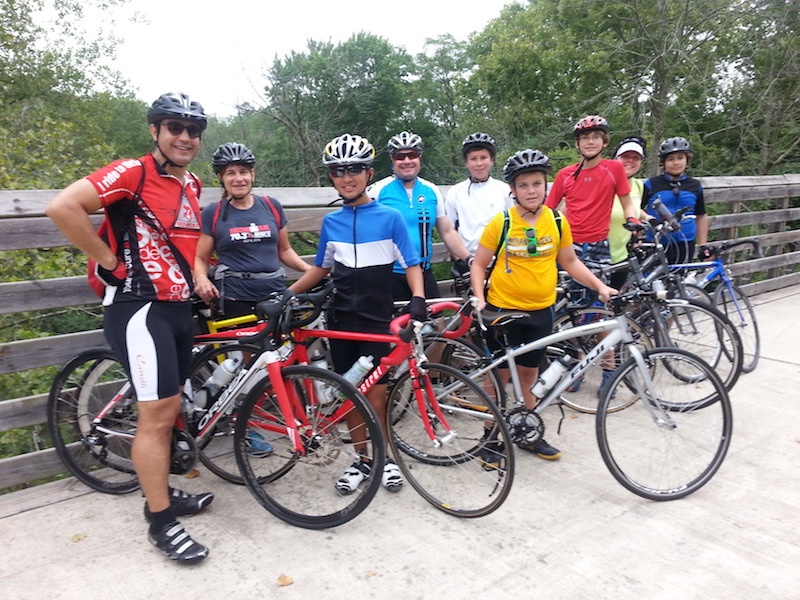
From Kokomo to Peru and Peru to Rochester, there might not be a lot of services along the trail, but you do have solitude, the rustic beauty of the area and, if you’re lucky, a chance to see the bald eagles that nest just north of Peru.
The trail ends in Rochester with little fanfare, just a small sign and picturesque gazebo. Luckily, there’s a host of restaurants within less than a half-mile. The Dam Landing, located on nearby Lake Manitou, doesn’t see a lot of trail visitors in the winter, but in the warmer months, the outdoor patio is filled with lycra-clad riders sampling a surprisingly good craft-beer menu and digging into burgers and massive mac-and-cheese bowls.
Kuepper believes the few restaurants along the trail have seen an average increase of 5 to 10 percent.
“It might not sound like much, but for some places—that could mean the difference between a loss and turning a profit,” Kuepper said.
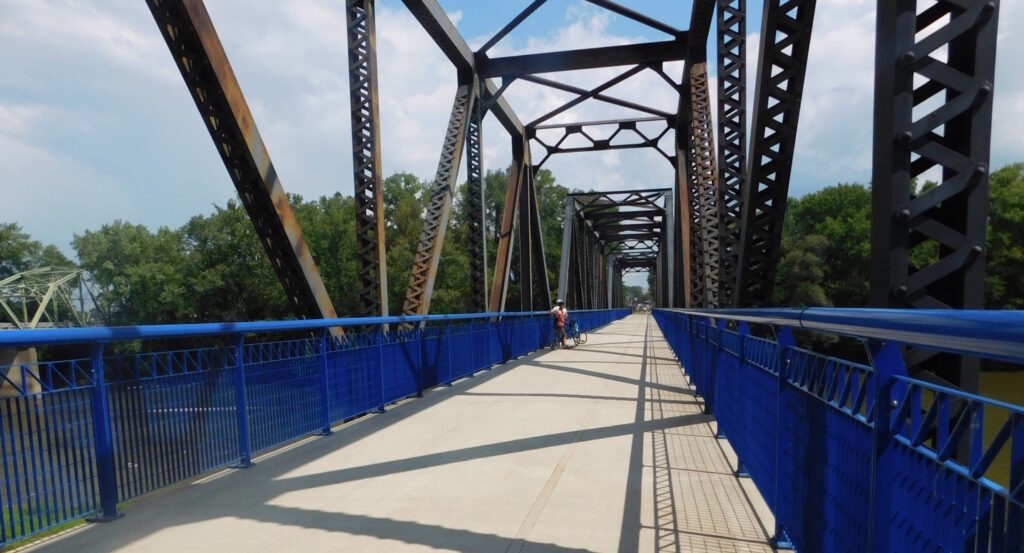
Future Plans
There are plans to expand the Nickel Plate about a mile north to Rochester’s downtown sometime in the next year or so. Kuepper and other local advocates would also like to see an eastward expansion from the Nickel Plate Trail near Grissom Air Reserve Base to Converse, Indiana, and the Converse Junction Trail. The plan, Kuepper says, is to eventually connect to the Cardinal Greenway to create a connected trail network of more than 140 miles from Richmond to Rochester.
Unfortunately, there’s currently no firm timetable for the expansion, Kuepper says. Until then, trail users will have to be satisfied with this 37-mile slice of Hoosier Heaven.

Donate
Everyone deserves access to safe ways to walk, bike, and be active outdoors.
